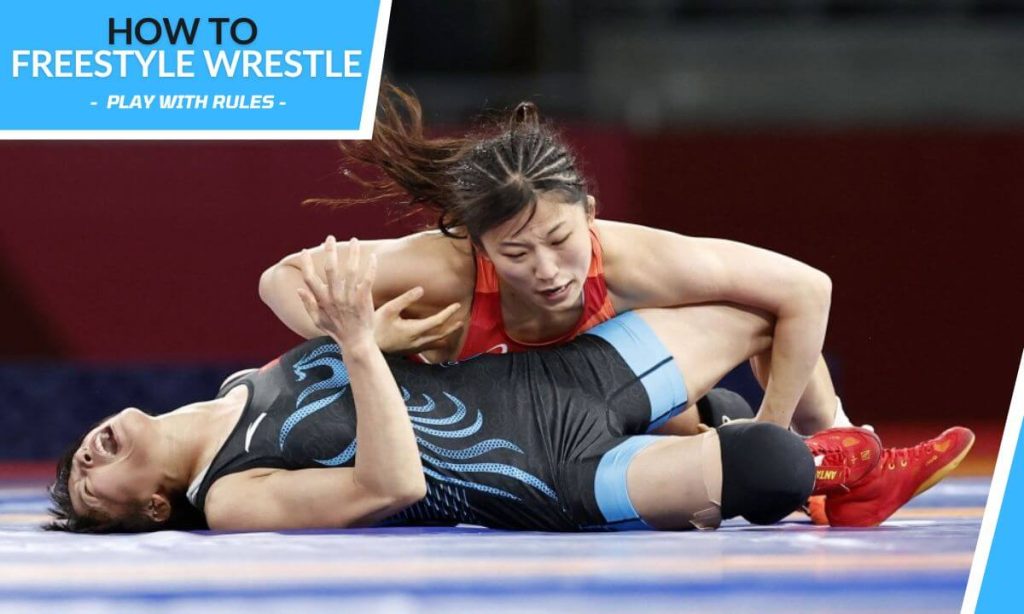Freestyle Wrestling Rules: Get ready either to leave it all on the mat or go home! This is the electrifying attitude that freestyle wrestlers bring to the wrestling mat. Whether it’s amateur wrestling or the grand stage of the Olympics, Freestyle Wrestling rules help to win the game. The game, hailed as one of the most thrilling and popular wrestling formats in the Olympics today, is about to become your new passion.
The sport requires incredible speed, agility, and raw power. But the technique is above all else. In this article, we shall dive into the kinetic world of freestyle wrestling, where you grapple for glory!
Table of Contents
How To Freestyle Wrestle?
Freestyle Wrestling is a versatile combat sport that coalesces elements from disciplines like traditional wrestling, sambo, and judo. In freestyle wrestling, wrestlers can grab their opponents below the waist and at the legs for defensive and offensive maneuvers.
Objective
Freestyle wrestling aims to win by besting your opponent using strategy, skill, strength, and technique. There are a number of ways to win. For example, if you tackle and pin your opponent with their shoulders against the mat for a few seconds, then you win by fall or pin (the terminology is explained below in the article). Alternatively, you can win by outsourcing your opponents as well. Now, let’s dive into the Rules of Freestyle Wrestling.
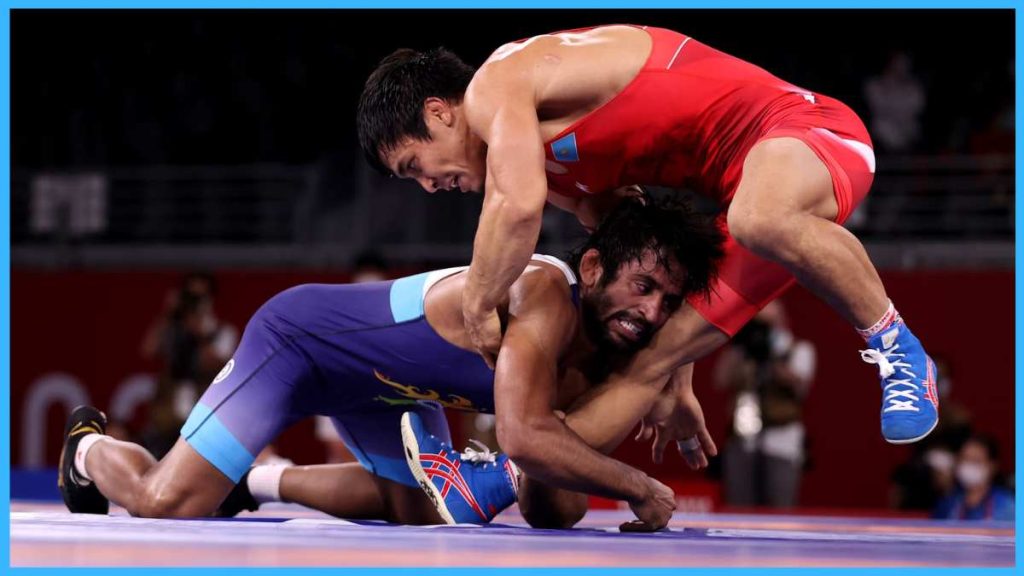
Freestyle Wrestling Rules
As entertaining as watching a freestyle wrestling match, there is a genuine threat of one or both wrestlers being injured or losing control. That is why there are rules that govern how a wrestler should act, what is disallowed, and what isn’t. In this section, we shall proceed step-by-step in explaining the rules of freestyle wrestling:
Format
The format of different wrestling competitions may vary. Here, we will focus solely on the format of freestyle wrestling and how a match starts:
- Before the match begins, both wrestlers are briefly introduced, including a summary of their accomplishments.
- After this, both wrestlers meet at the center of the mat and shake hands to show camaraderie.
- The referee checks both wrestlers for any infractions, after which each wrestler goes to their corner and waits for the referee to blow the starting whistle.
- Once the referee blows the whistle, freestyle wrestling begins.
Session
A session here refers to the duration of each round and match in freestyle wrestling. Here are the regulations concerning sessions in this sport:
- Every round includes 2-minute sessions during which each wrestler tries to maximize their score by out-maneuvering their opponent or establishing dominance by performance.
- Every match has a best-out-of-three format, meaning if a wrestler wins two rounds, he/she wins. There is no need for a third round.
Penalties, Caution, And DQs
There are specific actions that are not allowed in freestyle wrestling. Conducting them or subjecting your opponents to these actions can lead to a penalty. Wrestlers can be penalized by deducting 1 or 2 points depending on the nature and the degree of infractions. Here are some of the most common penalties in freestyle wrestling:
- Wrestlers lose points if they take a time-out for an injury without bleeding.
- According to freestyle wrestling rules, brutalizing your opponents or employing illegal moves can result in losing points.
- A caution is issued if a wrestler flees a hold instead of defending or, in the case of a minor infraction.
- If a wrestler endangers their opponent’s safety and blatantly disregards the rules of freestyle wrestling, they are disqualified (DQ).
- If a fighter cannot continue owing to an injury or fails to appear for the match, they automatically forfeit the match.
- Freestyle wrestling states that if a wrestler’s foot crosses the designated combat area on the mat, 1 point is deducted from their score.
- A wrestler is not allowed to use a leg scissor to move to their opponent’s head, body, or neck. However, the leg scissor move is allowed on the legs and the arms.
- If a wrestler continually takes a passive stance, they are put on a thirty-second shot clock, during which each wrestler tries to score points. If no points are scored during this time, the opponent of the passive player is awarded a point.
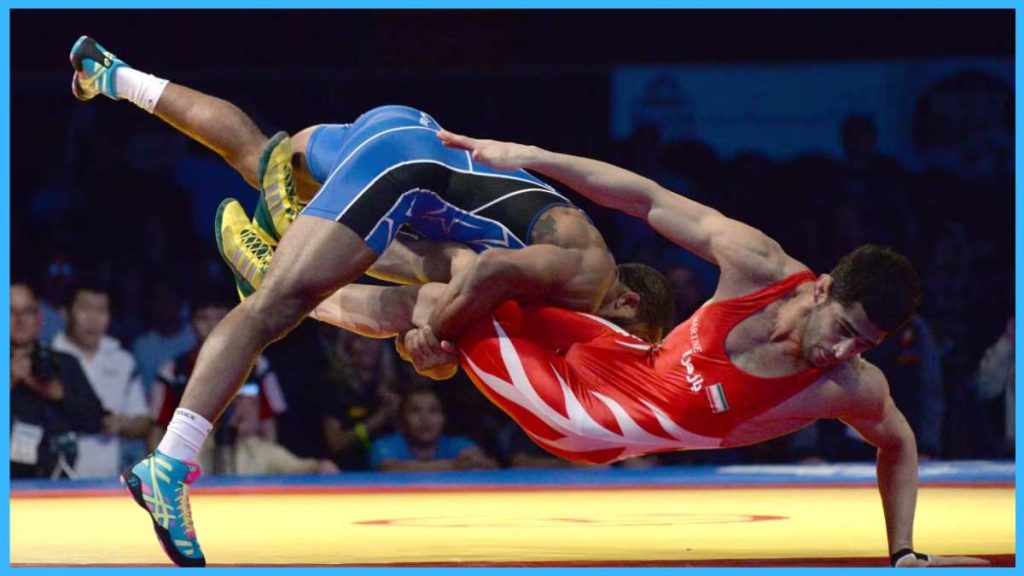
Freestyle Wrestling Scoring
Now, we have come to one of the most critical aspects of freestyle wrestling – scoring. Freestyle wrestling resorts to a particular point system where wrestlers who perform difficult and complex moves are awarded higher points than the ones who perform simpler moves. So, how does one accumulate scores in wrestling? Is pinning the only way of getting points? Let’s find out:
Takedown
A takedown is one of the highest-scoring maneuvers that a wrestler can perform. It is also one of the toughest. A takedown involves three points of contact across the body but can vary in style, direction, and execution. A takedown that involves lifting the opponent and dropping them on the mat in a fashion where their legs are lifted above the head will fetch a high score. Takedowns can be of 2-5 points.
Reversal
A reversal is when a wrestler successfully turns a defensive situation (a situation where they are compromised) into an offensive situation that benefits them and gives them an advantage. According to the rules of freestyle wrestling, reversals fetch 1 point.
Exposure
Exposure is when a wrestler successfully puts their opponent on their back for a few seconds. It is also popularly called the ‘danger position’ and can fetch 2-3 points, depending on the fluidity of movement, technique, execution, duration, etc.
Winning
The winning mentality is non-negotiable if you are competing in a professional freestyle wrestling competition or jostling for fun. Racking up more points than your opponent is a great way to establish victory. However, there are other ways as well, and they are as follows:
Default
If a fighter or wrestler cannot continue the match due to injury or for any other reason, they automatically forfeit the match, and their opponent wins. This is called winning by default.
Technical Pin
A victory by ‘technical pin’ / ‘technical fall’ is when a wrestler secures a 10-point lead over their opponent during any game.
Pin
This is the most common method of winning that wrestlers try to achieve. It is definitely difficult, but it is also the most overpowering method of winning a freestyle wrestling match. A pin is when a wrestler pins down his/her opponent with their shoulders pressed against the mat for a couple of seconds. This is called victory by pin or fall.
Decision
If neither wrestler could secure a win by any decisive method, the judges’ scorecards came to the rescue. The wrestler with the highest points at the end of the match wins. The number of complex techniques, maneuvers, near-takedowns, and overall dominance influences this scoring system.
Disqualification
Wrestlers are disqualified if they show flagrant disregard for the rules of freestyle wrestling and continued infractions or have been issued three cautions during a match. Therefore, the opponent of the disqualified wrestler wins immediately.
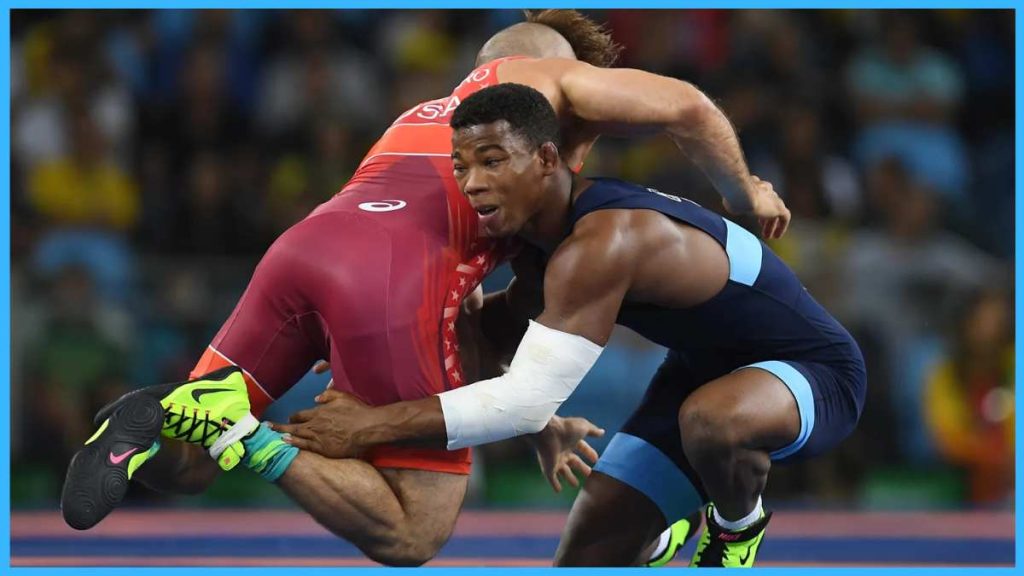
Freestyle Wrestling Techniques
Freestyle wrestling is a newer form that is more fluid and versatile than its counterpart, Greco-Roman wrestling. In Greco-Roman wrestling, grabbing the opponent below the waist or grabbing their legs for defensive or offensive moves is strictly prohibited.
In freestyle wrestling, wrestlers can use their opponent’s legs, waist, and hips to take them down. That is why wrestlers start off with a low-hung posture to defend their open legs or to go their opponent’s. Also, in freestyle wrestling, the wrestlers can let go of each other after a move has been completed or for strategic purposes. This makes freestyle wrestling a more inclusive and fluid form of wrestling.
Tips & Strategies
Technique and power are of paramount importance in freestyle wrestling. However, with a sound strategy, your chances of winning increase significantly. That is why we have listed down some practical tips that will help you improve your wrestling game remarkably:
- Stay low. This will help you defend lower takedowns, give you more control of your body, and allow you to go for the opponent’s legs.
- Use feinting to distract your opponent or catch them off-guard. Feinting will give you the chink in their armor.
- Break off and let go of your opponent if you’re trying to catch your breath or re-strategize. Maintain your distance, but make sure you don’t flee and have points deducted.
- Take your time to go in. A really good strategy is to keep your cool and let your opponent come to you. This gives you more room to position yourself and pace yourself throughout the fight using a more advantageous position.
- Use aggression, but do so in a controlled manner. The right amount of aggression will earn you points, but the wrong kind can take them away.
- The aim should be to land a ‘fall’ or to take down your opponent using a complex move. However, don’t get too hung up on that and lose the match. Stay on your toes at all points and assess which move you can use to capitalize.
- Study the shoulders and knees because they come into motion before the rest of the body. If you can catch your opponent’s attention, you will be able to defend better.
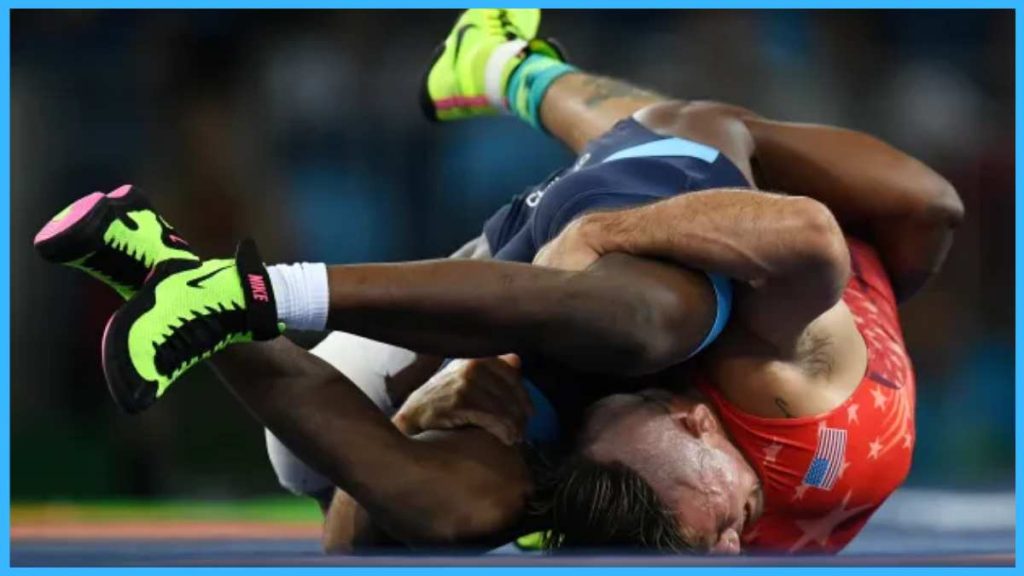
Did You Know?
- Freestyle wrestling started in Great Britain in the 1800s (catch-as-catch-can sport).
- United World Wrestling (UWW) was the first governing body to introduce the rules of freestyle wrestling in 1921.
- Freestyle wrestling has been part of the Olympic schedule every year, except in 1896 and 1912.
- The United States is leading in the freestyle wrestling category with 110 Olympic medals, closely followed by The Soviet Union and Japan (56 and 45 Olympic medals, respectively).
FAQs
Is Freestyle Wrestling part of the Olympics?
Yes, it is. It wasn’t always part of the Olympics. It marked its Olympic debut at the 1904 St. Louis Summer Games. However, it was solidified as part of the Olympics in 1920.
What are the different weight classes in freestyle wrestling?
The different weight classes in Freestyle Wrestling are flyweight, bantamweight, featherweight, lightweight, welterweight, middleweight, light heavyweight, heavyweight, and super heavyweight.
How do I win in freestyle wrestling?
To win, you simply need to score more than your opponent or pin them with the shoulders to the mat. Alternatively, you can win by technical fall, DQ, default, or default by following the freestyle wrestling rules.
Are leg takedowns allowed in freestyle wrestling?
Yes, they are. However, be careful about it. You are not allowed to brutalize your opponents.
From ancient history to the Olympic mat, freestyle wrestling has captivated audiences for hundreds of years. Even better, the sport is evolving and growing even further. Yes, it is a form of combat sport, which means injuries are common. That being said, there aren’t many sports that can get your heart pumping, just like freestyle wrestling. Now that you have learned about freestyle wrestling rules, you can head to the mat.
On that note, let’s learn about another interesting sport. How about Cut Throat Pool? It sounds fun, right? Let’s dive in!

